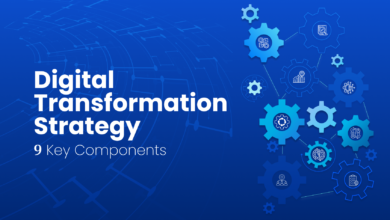Cybersecurity for Businesses: Protecting Your Digital Assets in 2025

In an era where businesses rely heavily on digital technologies, cybersecurity has become more critical than ever. Cyberattacks, data breaches, and ransomware threats can have devastating consequences on a company’s operations, reputation, and financial stability. A robust cybersecurity strategy is essential to safeguard business data, protect customer information, and ensure compliance with regulatory standards. In this article, we will explore the importance of cybersecurity for businesses, key strategies, and best practices for 2025.
What is Cybersecurity for Businesses?
Cybersecurity for businesses refers to the protection of digital assets, networks, and systems from unauthorized access, cyberattacks, and data breaches. It involves the implementation of policies, technologies, and practices that safeguard sensitive information, prevent malicious activities, and mitigate risks associated with cyber threats. With the rise of remote work, cloud computing, and digital transactions, businesses are more vulnerable to cyber threats than ever before.
- Key Features of Cybersecurity for Businesses
A comprehensive cybersecurity strategy includes features such as firewalls, encryption, multi-factor authentication (MFA), threat detection systems, and employee training programs. These tools work together to provide a multi-layered defense against cyber threats. - Why Cybersecurity is Vital for Businesses
Cybersecurity is vital for businesses because it helps protect valuable data, prevent financial losses, and maintain customer trust. A single security breach can lead to significant damage, both financially and reputationally, making cybersecurity a top priority for business owners.
How Cybersecurity Works for Businesses
Cybersecurity for businesses works by implementing various protective measures to detect, prevent, and respond to cyber threats. Here’s how it works:
- Threat Detection and Monitoring
Cybersecurity systems continuously monitor networks and systems for any suspicious activity. Threat detection tools can identify potential vulnerabilities, unusual access patterns, or malware attacks in real-time, allowing businesses to take action before damage occurs. - Encryption and Data Protection
Encryption is used to protect sensitive data by converting it into unreadable code. This ensures that even if cybercriminals intercept data, it cannot be accessed without the decryption key. Data protection also involves secure backup and disaster recovery processes. - User Access Control and Authentication
Restricting user access to sensitive systems and data is a critical aspect of cybersecurity. Multi-factor authentication (MFA) and strong password policies add an extra layer of protection, ensuring that only authorized users can access critical business information. - Incident Response and Recovery
In the event of a cyberattack, businesses need a well-defined incident response plan to contain and mitigate the attack. A solid recovery plan ensures that businesses can restore operations quickly and minimize the impact of the breach.

Benefits of Cybersecurity for Businesses
Implementing strong cybersecurity measures offers several key benefits that help businesses protect their assets and operations:
- Protection from Data Breaches and Cyberattacks
The most obvious benefit of cybersecurity is the protection it provides against data breaches, hacking, and cyberattacks. Effective cybersecurity measures reduce the risk of unauthorized access to sensitive data, preventing potential losses. - Preservation of Customer Trust
Customers trust businesses with their personal and financial information. A security breach can erode that trust and lead to the loss of clients. With strong cybersecurity practices, businesses can reassure customers that their data is safe and secure. - Regulatory Compliance
Many industries have specific regulations that require businesses to protect customer data and maintain cybersecurity standards. Non-compliance can result in penalties, legal consequences, and damage to a company’s reputation. Cybersecurity helps businesses comply with these regulations. - Business Continuity and Risk Management
Cybersecurity ensures business continuity by minimizing downtime during cyberattacks. By preventing data loss and ensuring secure backup processes, businesses can continue operations even in the event of a breach. - Protection of Intellectual Property
Businesses invest significant resources in developing intellectual property, such as patents, trademarks, and proprietary software. Cybersecurity protects these valuable assets from theft or unauthorized access, preserving a company’s competitive advantage.
Key Cybersecurity Strategies for Businesses
To safeguard their digital infrastructure, businesses must adopt key cybersecurity strategies that address various vulnerabilities:
- Employee Education and Awareness
One of the most effective ways to prevent cyberattacks is through employee education. Training employees on the risks of phishing, password management, and secure internet practices can significantly reduce the likelihood of a security breach. - Regular Software Updates and Patching
Cybercriminals often exploit vulnerabilities in outdated software and systems. Regularly updating software, applications, and operating systems ensures that businesses are protected from known threats and vulnerabilities. - Firewalls and Intrusion Detection Systems
Firewalls act as barriers between a business’s internal network and external threats. Intrusion detection systems (IDS) monitor network traffic for suspicious activity, allowing businesses to detect potential threats before they cause damage. - Data Backup and Disaster Recovery Plans
Regularly backing up critical data and establishing a disaster recovery plan ensures that businesses can recover from cyberattacks, such as ransomware or data breaches, without significant losses. - Endpoint Security
Protecting all devices connected to the network, including computers, smartphones, and tablets, is essential for maintaining overall cybersecurity. Endpoint security tools, such as antivirus software and mobile device management (MDM), help prevent malicious attacks on individual devices.
Also Read: The Importance of a Digital Transformation Strategy for Business Growth in 2025

Challenges in Cybersecurity for Businesses
- Evolving Cyber Threats
Cybersecurity is a constantly evolving field as hackers and cybercriminals develop new tactics and techniques. Businesses must stay up-to-date with the latest cybersecurity trends and threats to remain protected. - Insufficient Budget and Resources
Implementing a comprehensive cybersecurity strategy can be costly, especially for small and medium-sized businesses (SMBs). However, the potential costs of a data breach far outweigh the investment in cybersecurity. - Human Error
Even with advanced cybersecurity systems in place, human error remains one of the leading causes of security breaches. Employees must be vigilant and trained regularly to avoid falling victim to phishing attacks or other social engineering tactics. - Complexity of Compliance
Different industries have varying cybersecurity regulations and standards, making it challenging for businesses to stay compliant. Ensuring that all regulatory requirements are met can be complex and time-consuming.
Conclusion: The Importance of Robust Cybersecurity in 2025
As digital transformation continues to accelerate, businesses must prioritize cybersecurity to protect their data, assets, and customer trust. A strong cybersecurity strategy is not just about preventing attacks but also about ensuring business continuity, regulatory compliance, and long-term success. In 2025 and beyond, businesses that invest in cybersecurity will be better equipped to navigate the growing threat landscape and safeguard their operations.




One Comment